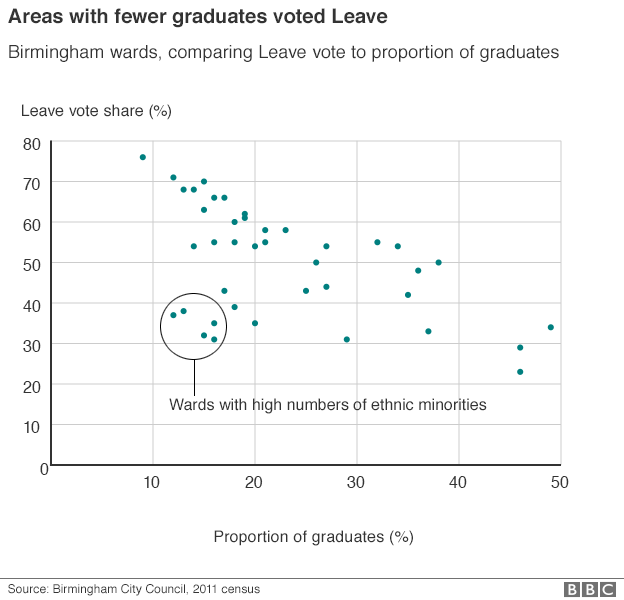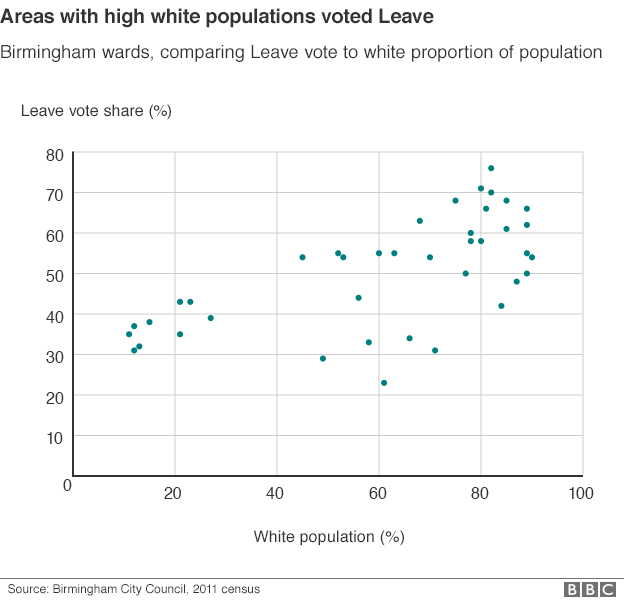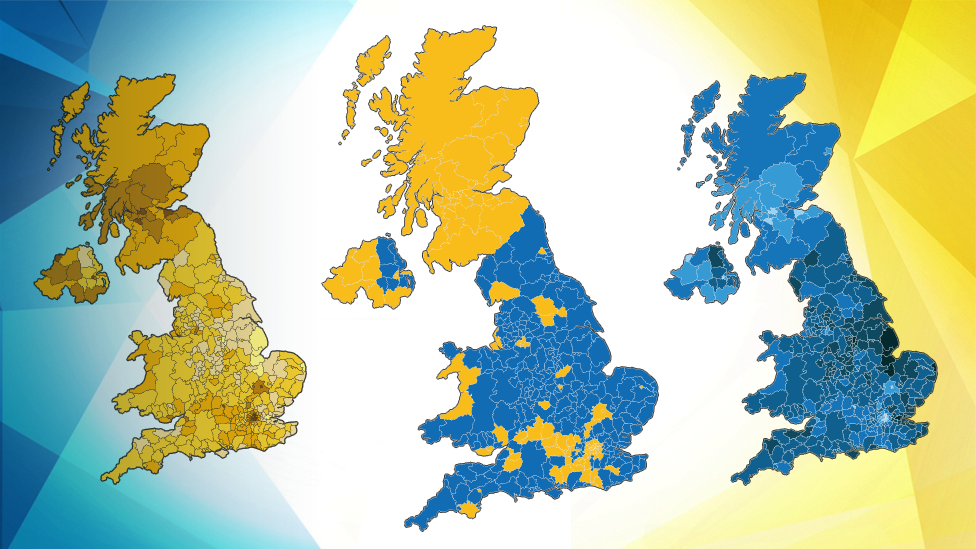Ethnic dimension to Birmingham's vote
- Published
Detailed voting data from Birmingham sheds extra light on the EU referendum result. It confirms that Leave support was strongly linked to local populations who were older and had lower educational qualifications, but also shows that the city's ethnic minority areas were more likely to support Remain.
Birmingham council is one of very few authorities that have so far published their referendum voting figures, external broken down by local wards, external. The BBC will be trying to obtain this information from as many councils as possible. Data at this level can add more local detail to the national pattern, particularly when comparing it to ward statistics from the 2011 census.
Analysis at the national level, external has found a very significant connection between the Leave vote share across the UK's council-based referendum counting areas and populations with lower levels of educational qualifications. Compared with other standard social and demographic factors, this had the highest correlation, external with the Leave vote.
This was evident at the ward level in Birmingham too. The first graph shows how wards with high Leave votes had smaller proportions of graduates and people with equivalent qualifications. The pattern is maintained when other educational qualifications are also considered. Shard End ward had the highest Leave vote, at 76%, and the lowest proportion of graduates, at 9%. In contrast, Moseley and Kings Heath ward had the lowest Leave share, at 23%, and consists of 46% graduates.
The link to lower qualification levels is stronger than associations with other usual indicators of class or poverty, such as the standard system of social grades or measures of deprivation derived from census data.

However, one very striking feature of this chart is the cluster of wards towards the bottom left, which have low qualification levels but - in contrast to the general pattern - also a low Leave vote.
The five wards of Aston, Bordesley Green, Lozells and East Handsworth, Sparkbrook and Washwood Heath had Leave vote shares under 38%, while also having proportions of graduates of under 17%. They are the five wards that deviate most starkly from the powerful city-wide and national pattern. They are also the five Birmingham wards with the highest ethnic minority populations - under 15% of their residents are white. This can be compared with the highest Leave ward, Shard End, which is 82% white.
The second graph shows how the Leave vote was higher in those wards with a larger white population. In contrast, a high Remain vote was particularly strongly tied to high numbers with Asian ethnicity, although also strongly linked to high numbers of black residents.

Another factor that powerfully connected to the Leave vote was age, nationally and in Birmingham. The Leave vote tended to be significantly higher in wards with older voters.
These three factors - level of qualifications, ethnicity and age - account for over 90% of the variation in the voting results across the 40 Birmingham wards.
Birmingham is important and interesting, as it was a very large counting area and had a result, with Leave at 50.4%, which was close to the national outcome (Leave at 51.9%). However, as a major city with a high ethnic minority population, it is not necessarily nationally representative.
A few other areas have released ward-by-ward breakdowns. This includes Lambeth, external, but as the counting area with the highest Remain vote (apart from Gibraltar) and one that was consistent across the borough, there is less variation to assess. Greenwich has also released ward figures, external, but the way it has treated postal votes makes useful analysis harder.
Voting patterns could of course have been different in various locations across the country. That's one reason why the BBC will be trying to get comparable data from as many places as possible.
You can follow Martin Rosenbaum on Twitter as @rosenbaum6
- Published8 June 2021

